- Home
- Patricia Cornwell
Ruth, a Portrait Page 3
Ruth, a Portrait Read online
Page 3
The Qingjiang General Hospital was filled with Chinese suffering from cholera, tuberculosis, and venereal disease. Doctors treated burns and knife and gunshot wounds inflicted by bandits who frequently tortured victims into revealing where the family money was hidden. Domestic beatings and shootings had dramatically increased since the fall of the last Chinese dynasty nine years earlier, when Chinese men had been cutting off their queues. It was speculated that squabbles once settled by the painful yanking of the long braids now found more violent expression.
There were the usual cases of attempted suicide, when Chinese lost face or hope and swallowed match heads or arsenic. Children carried into the hospital manifested scalps eaten to the bone from home treatments of arsenic for that “heavenly thing,” as the Chinese called malaria. Doctors removed long needles from torsos and faces and battled other home remedies for meningitis and for kala-azar, or black fever.
Most Chinese did not trust the Western doctors. Healers from far away were monsters who made medicines from dead Chinese baby eyes and bones. The missionary physicians were alchemists who changed Chinese marrow and other bodily elements into gold. Often the superstitious Chinese did not visit the hospital until no hope was left, and tumors weighing ten, twenty, forty pounds and more were removed. A one-hundred-eighty-three-pound woman arrived at the hospital gate, pushing her tumescent belly ahead of her in a wheelbarrow. After Dr. Bell removed the tumor, she weighed ninety pounds. Untreated fractured bones healed at bizarre angles and were rebroken and set. A local peasant finally resorted to alchemy at the Western hospital when his broken ankle fused and his foot pointed backward.
By 1920 Dr. Bell was the superintendent of the growing hospital. He was known for his compassion, humor, and long hours. Often he performed as many as nine operations in the morning, leaning over a sea of white in the glow of a low, tin-hooded lamp while nurses with towels wiped sweat from his face. At meals he frequently teased Virginia and the children by describing that day’s procedures in graphic, gory detail. A highly skilled surgeon, he was versatile enough to remove cataracts or fill a tooth. He could amputate a leg and fashion a prosthesis from a beam of wood. He made house calls fifty miles into the countryside, his black Harley-Davidson motorcycle with sidecar bumping over the rutted, six-foot-wide dirt roads. He sometimes gave his own blood to patients, because the Chinese would not donate theirs, not even for money.
Blood, the Chinese would explain, “is handed down from our ancestors. He who loses it in this world will not have it in the world to come. Who would willingly spill or waste a drop of it?”
What mattered most was souls, and Dr. Bell would later say that the hospital existed “primarily for the preaching of the Gospel.” Ambulatory patients were required to attend daily chapel. There was a full-time evangelist on the hospital staff to work with the male patients and a Bible teacher to work with the women. To Dr. Bell, the spiritual gifts were more significant than athletic or surgical skills. On a slip of paper under the glass covering his rolltop desk, he had scribbled the fruits of the Spirit, a reminder of the Love, Joy, Peace, Long-Suffering, Gentleness, Goodness, Faithfulness, Meekness, and Self-Control that he aspired to manifest in his own life.
He was renowned for his courage. Once two hundred corrupt militiamen began looting the nearby home owned by the Grahams, then on furlough in the United States. When a houseboy rushed to the operating room to alert everyone, Dr. Bell raced to the scene. He kicked down the locked gate and chased off the thieves, then pursued them to their camp, where he retrieved a stolen bicycle.
On another occasion, while he was traveling by barge, a Chinese man who could not swim fell into the Grand Canal. Dr. Bell dove into the muddy water after him while other passengers watched in amazement, not understanding why this foreigner would risk his life for a coolie. In an environment where the most formidable mental enemy was the feeling of futility, Dr. Bell’s colleagues knew him as a man who was never tormented by discouragement. To many Chinese, he was Chong Ai Hua, or “the Bell who is lover of the Chinese people.”
On Thursday, June 10, 1920, Dr. Bell ran upstairs to his bedroom in the family’s gray brick Chinese house on the compound. He rolled up his sleeves, scrubbed his hands, and filled a pan with steaming water. His heart thudded harder than it normally did when he delivered a baby. This was his own. No one recalls what time she arrived, but it was in the year of the monkey, which, according to Asian astrologers, spawned multitalented, adventuresome, and witty people. Ruth McCue Bell, named for her paternal grandmother, would fulfill those prophecies.
She began life rather unceremoniously. Her parents’ Chinese friends did not pass out red-dyed eggs or ignite strands of firecrackers to celebrate the birth of a girl. Now, the Chinese thought, poor Chong Ai Hua had two little nuisances. Rosa Wertenbaker Bell had been born two years earlier. Ruth’s birth certificate was registered in the Nanjing consulate, which would be destroyed in 1927, leaving no official proof of Ruth’s arrival in this world.
In 1922 the Bells built a two-story gray brick house on the compound to accommodate their growing family. Their modest new home had a corrugated red tin roof, a two-level porch, and three dormer windows. It was less than a hundred yards from the hospital operating room where Dr. Bell began work at 8:30 each morning, after breakfast and family devotions. As was true of most missionaries, the Bells were determined to Westernize their children in preparation for their one day leaving for American colleges, husbands, and homes. Ruth’s parents worked to make what could have been Spartan living conditions comfortable. After the hospital acquired a generator, Dr. Bell equipped his house with electric lights and a refrigerator. Later he installed a telephone system in missionary homes within a mile radius of his compound, more than a decade before lines would connect Shanghai to the smaller cities.
Perhaps the most troublesome inconvenience, and one that could not be remedied, was the absence of indoor plumbing. Bathrooms were nothing more than two cubbyholes, one off the upstairs porch and another off the kitchen. Each featured a square wooden box with a hole in the middle and a five-gallon bucket underneath, which was emptied daily by a collector of night soil. Though there was a well on the compound, the water was too hard and contaminated for drinking or cooking. Each day, water was carried from the Grand Canal and emptied into the large earthen jars, or gangs, outside the kitchen door. Half a cup of crystal alum was stirred into the murky water with a long stick, until impurities settled.
Most canal water was used for cooking and was deemed suitable for drinking only after it was boiled in a large kettle in the kitchen and filtered twice through cotton in Dr. Bell’s homemade galvanized tin water cooler in the pantry. What was left in the gang was heated each week and carried to an upstairs bedroom for bathing. In the winter, the water was poured into a tub set before a trash burner stoked with soybean stalks and bits of trash to thaw a narrow margin of air. Usually Rosa would take her bath first.
Young Ruth would follow, slipping gingerly into the tepid water and spending the next few minutes rotating in the tub as the fire scorched one side and icy air froze the other. After a brisk scrubbing, Ruth hurried into a flannel gown and crawled into bed with a hot water bottle. Trash burners were the only source of heat in the bedrooms. Downstairs, the fireplace and the kitchen stove were stoked with some of the fifteen tons of Shandong coal Dr. Bell purchased for forty-five dollars each winter.
Mrs. Bell began furnishing their new home with the half-dozen Empire maple, oak, and mahogany pieces her father had crafted for her not long before she married. Other items were made by a local Chinese carpenter. The living room was decorated in shades of blue with Mandarin rugs on polished hardwood floors. A coal grate was in one corner, an upright piano stood between two windows, and flowered paper covered the walls. The Bell children were schooled in the strictest of manners, with dress clothes required at dinner and no elbows on the table. Tardiness at morning devotions meant no sugar on porridge, and sassing was unthinkable. The Bells ate Chine
se food, a cuisine that would always be Ruth’s favorite. The family also enjoyed fried chicken, biscuits, apple pie, and other southern fare.
Tomatoes, lettuce, asparagus, and other vegetables were grown in the small garden behind the house, which Mrs. Bell shared with the other missionaries. Through constant attention, Mrs. Bell turned the family’s bleak patch of earth into a lush space shaded by mulberries, Chinese elms, locusts, and fruit trees that rustled like starchy petticoats with each stir of air. Chrysanthemums, geraniums, lilacs, irises, and roses bordered the porch and the compound wall.
Like most missionaries, the Bells hired Chinese helpers and paid each of them two American dollars from their combined seventy-five-dollar monthly salary, an amount that tripled when converted to Chinese currency. Wages and working conditions in the Bell household were superior to those endured by other Chinese peasants. The cook was the head of the housekeeping staff, and without his prowess at bartering in the marketplace, Mrs. Bell would have had to contend with merchants tripling their prices the minute her foreign face appeared.
She taught the cook to prepare American dishes, though some of his early attempts at making biscuits, for example, were disastrous. She supervised him closely to ensure that he washed all vegetables in boiled water and practiced other sanitary measures. Other housekeepers did the laundry and cleaning. In the gatehouse lived Liu Er, an affable sentry who monitored all who entered and left the compound and carried water from the Grand Canal each day.
The family’s most important helper and the one dearest to Ruth was her amah, or nanny, Wang Nai Nai, who lived in a small room in the Bells’ house. She had been a procuress of “little flowers,” or child prostitutes, before missionary Sophie Graham had converted her to Christianity.
Wang Nai Nai was barely five feet tall and weighed ninety-six pounds in her thickly padded winter clothes. Her face was broad and flat, with deep, cheerful wrinkles radiating from small dark eyes. Her thinning gray-streaked hair was always in a bun, and because she was of peasant stock, her feet had never been bound. Wang Nai Nai doted on Ruth and was sometimes less than affectionate with Rosa. To the superstitious Chinese, it was a shame for the first child to have been born a girl instead of a boy.
A housekeeping staff was not the luxury one might suppose. The help bickered among themselves and needed constant and close supervision. On two occasions, the amah forgot to wash Ruth’s hands before bed and the child awoke screaming and bleeding after a rat bit her finger. Scorpions scuttled into laundry baskets, and bedbugs and lice stowed away on freshly laundered linen and clothing. The house would soon have been infested had Mrs. Bell not stood guard at the door to inspect each article the servants carried in from the hospital laundry.
Despite all precautions, illness was accepted as the norm. Scarcely a month passed without one of the Bells contracting flu, a cold, a viral infection, or unexplainable low fever. Mrs. Bell was plagued by daily headaches that ran through her temples like a white-hot iron and sent her blindly retreating to her bedroom, where she lay with the curtains drawn until the throbbing and ringing in her ears subsided. Home treatments of narcotics and soaking her feet in hot mustard water offered little relief. Though their cause would never be known, it was suspected that the headaches were malarial and triggered by stress.
The threat of death by disease was very real to missionaries, and foreign graves were plenteous. In December 1924, the Bells were given their first son. Nelson Jr. died ten months later of amoebic dysentery. His mother slipped his small body into a fresh white baby dress and lined his coffin with white linen. He was buried in the brick-walled foreign cemetery in Qingjiang where many other American children had been laid before him. Missionaries formed a dark knot beneath the bleak winter sky as they stood by the tiny raw grave and sang the Doxology.
“Praise God from Whom all blessings flow…,” little Ruth sang at hip level beside her parents, her round face swallowed by a coarse woolen cap.
Dying for Christ was part of the Christian tradition. Ruth was familiar with believers who had been persecuted and murdered during the Boxer Rebellion. She knew other stories of Christians who had suffered for the glory of God. The martyrs were Ruth’s childhood heroes. To become a martyr was to weave one’s story into the fabric of legend, the highest and most noble expression of faith.
To little Ruth, God was an all-powerful, heavenly Father. She so dearly loved Him for His loving her that at the end of each day, just before she sank into a heavy sleep, she would kneel beside her bed and pray that He would let her die for Him. Rosa, the pragmatist, countered her sister’s prayer with one of her own: “Please, God, don’t listen to her!” The difference between the sisters’ requests was significant. Ruth was imaginative and tended to romanticize. To her, a death by bullet or long knife was appealing. Rosa was more grounded and fantasized about being kidnapped by a band of bandits. They would carry her off to the black hillside, where she would proceed to convert them around the campfire.
Ruth was an unusually spiritual child, but behind brown curls and innocent eyes crouched a mischief maker who chased Rosa around the yard with dead bugs and, on one occasion, a pair of scissors. Spats were small typhoons, the sisters’ tiny bodies disappearing into a whirling cloud of flailing feet, fists, and tangled hair. Rosa and Ruth shrieked and pummeled with such ferocity that the household help gathered round and placed bets.
Fights in the Bell household, however, were the exception rather than the rule. Tense moments were usually defused by Dr. Bell’s sense of humor. He wasn’t the stereotyped Calvinist who disapproved of fun, but believed in working and playing equally hard. In the yard, he built a fifteen-by-twenty-foot brick swimming pool that held five thousand gallons of well water. A source of pleasure, the pool enabled the family to endure unbearably hot summers, when most missionaries fled to the cool mountains of Kuling or to Japan. The Bells did not take vacations, but stayed at the hospital compound, working as usual and taking frequent dips.
Dr. Bell and his missionary colleagues built a clay tennis court on the compound and made a golf course by sinking soup cans into the lawn. Perhaps Dr. Bell’s most curious creation was a corn popper he built from a trench mortar. When the pressure reached one hundred and eighty pounds and he pulled the trigger, popped kernels exploded into a cheesecloth bag. Liu Er, the gateman, was placed in charge of this contraption, and the first time he tried it, the blast knocked his chair over backward.
Rosa and Ruth’s playmates were Hampton and William Talbot, sons of missionaries living half a mile from the Bells, and Sandy Yates, whose missionary parents lived in nearby Huaian. During the school year, Sandy stayed with the Bells, and several afternoons each week the children convened in one of the yards, where they played kick-the-can, croquet, and tag. They capered in the sandpile, on the swing, on the monkey bars, and in the tree house Dr. Bell had built high in the arms of a mulberry tree. Ruth played with dolls and hung over the edge of the tree house until her brain swam in her head like an egg yolk. She balanced on the six-inch-wide top of the compound wall and often followed it to school.
Like most children, Ruth was curious. One afternoon she decided to investigate a large nest high in the tallest tree in the yard. Without a thought she shinnied up the trunk and discovered a brook of buzzard fledglings. Scarcely had she peered at their hungry maws when the parents returned and began dive-bombing her. Ruth walked along the top of the wall the next day and was smashed on the top of her head by one of the putrid, grudge-bearing birds.
Ruth’s greatest indulgence was her pets. Her menagerie included canaries, pigeons, ducks, turtles, and a goat. But her favorite was Tar Baby, a black mongrel quite attached to Ruth but notorious for grabbing Chinese women by their bound feet and dragging them off the walk. Ruth was perpetually rescuing guinea pigs from the hospital laboratory, picking up lost baby ducks, and discovering another flea-infested kitten to carry home and bathe in Lysol. In an early diary entry she wrote, “I found a baby mouse today, but it bit me and d
ied.”
When one of these pitiful creatures, whether mouse or bird, died, she would assemble Hampton, William, Sandy, and Rosa and hold an elaborate funeral complete with hymns and eulogies. The deceased was buried in Ruth’s animal cemetery near the sandpile. She was so tenderhearted that she had a habit of picking up any dead animal she stumbled upon whether it was a pet or not. Her mother put an end to this when she noticed a rank smell coming from a closet one day and discovered a dead bird Ruth had forgotten in a sweater pocket.
Two years after the Bells’ arrival in China, the Communists and Kuomintang, or Nationalists, had formed the first united front since the fall of the last Chinese dynasty. Chiang Kai-shek succeeded in unifying China, bringing many of the warlords under control and establishing himself in Nanjing, the capital of the republic. But in the spring of 1927, he turned on the Communists and ordered the assassinations of party members and labor organizers, precipitating a bloody civil war which would last until the late thirties.
The inland missions lay in the path of marching troops, and the missionaries kept their ears to their radios, listening for instructions from the American consul in Shanghai. In late spring, the order crackled repeatedly, “S.P.M. missionaries in Taizhou, Qingjiang… be on the banks of the Yangtze River tomorrow morning. The USS … number 245 will pick you up.” The Bells sailed to the United States and settled in Waynesboro for several months, where a third daughter, Virginia, was born. From Waynesboro they moved to Holden, West Virginia, where Dr. Bell headed the surgical department at a local hospital. A year later the family moved to Houston, Texas, where Dr. Bell served as a lay minister at First Presbyterian Church.
China reopened to missionaries the following year, 1928, and the Bell family set sail on the SS President Cleveland. They arrived in Qingjiang on December 15 to discover that soldiers had ransacked the hospital and smashed the X-ray machine and other expensive equipment. They had stolen doorknobs, locks, electrical fixtures, and blankets and had slashed window screens that kept flies and other insects out of wards. Groups of soldiers had occupied the Bells’ home but found little to steal, since shortly after the evacuation Chinese friends had hidden the family’s belongings in the attic and removed the staircase, plastering over the entrance. Soldiers were puzzled by this strange American-style home that appeared to have an attic but no way to get to it. They periodically questioned Liu Er.

 Blow Fly
Blow Fly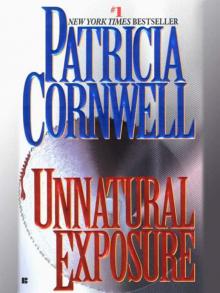 Unnatural Exposure
Unnatural Exposure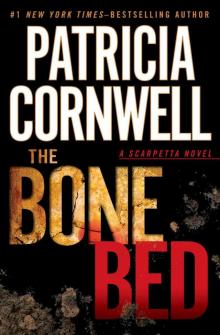 The Bone Bed
The Bone Bed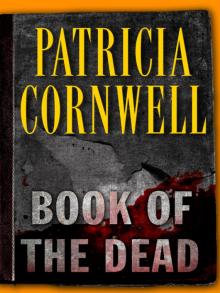 Book of the Dead
Book of the Dead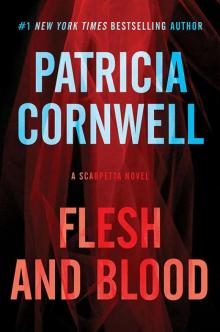 Flesh and Blood: A Scarpetta Novel (Scarpetta Novels Book 22)
Flesh and Blood: A Scarpetta Novel (Scarpetta Novels Book 22)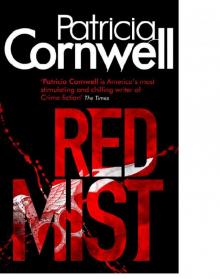 Red Mist
Red Mist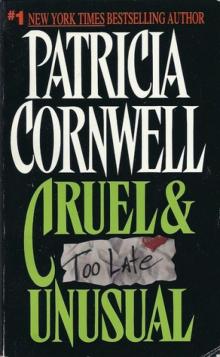 Cruel & Unusual
Cruel & Unusual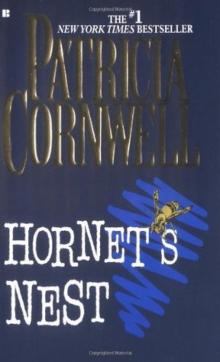 Hornet's Nest
Hornet's Nest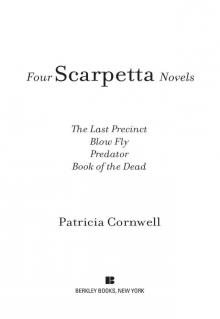 Four Scarpetta Novels
Four Scarpetta Novels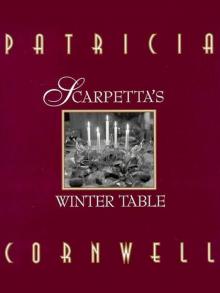 Scarpetta's Winter Table
Scarpetta's Winter Table Isle of Dogs
Isle of Dogs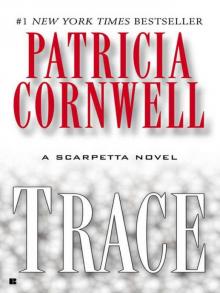 Trace
Trace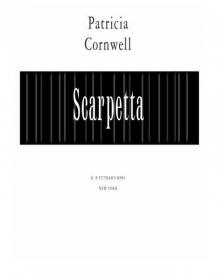 Postmortem
Postmortem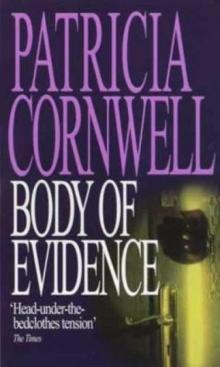 Body of Evidence ks-2
Body of Evidence ks-2 Southern Cross
Southern Cross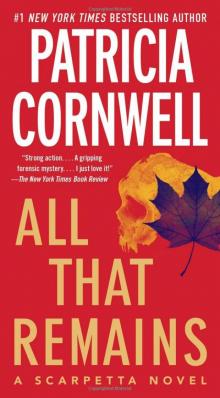 All That Remains
All That Remains Point of Origin
Point of Origin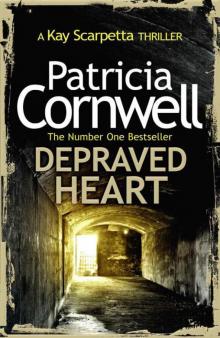 Depraved Heart
Depraved Heart Ruth, a Portrait: The Story of Ruth Bell Graham
Ruth, a Portrait: The Story of Ruth Bell Graham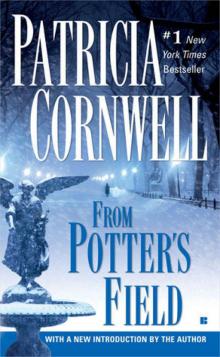 From Potter's Field
From Potter's Field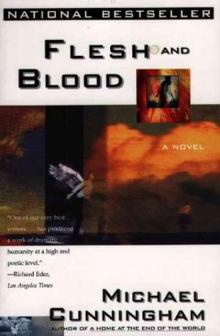 Flesh and Blood
Flesh and Blood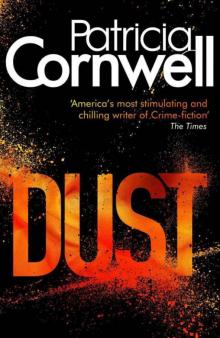 Dust
Dust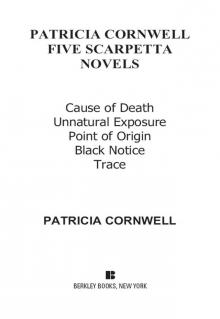 The Body Farm
The Body Farm Port Mortuary
Port Mortuary Quantum
Quantum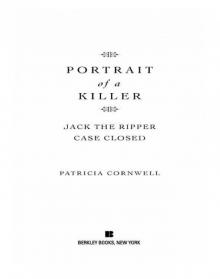 Portrait of a Killer: Jack the Ripper - Case Closed
Portrait of a Killer: Jack the Ripper - Case Closed Spin (Captain Chase)
Spin (Captain Chase)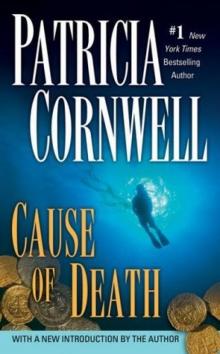 Cause of Death
Cause of Death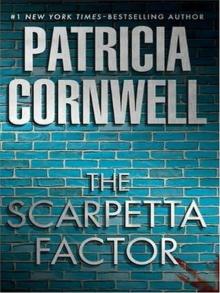 The Scarpetta Factor
The Scarpetta Factor Predator
Predator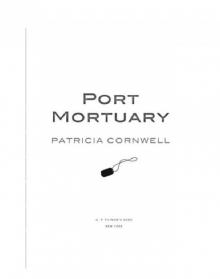 Scarpetta 18 - Port Mortuary
Scarpetta 18 - Port Mortuary Trace ks-13
Trace ks-13 Portrait of a Killer
Portrait of a Killer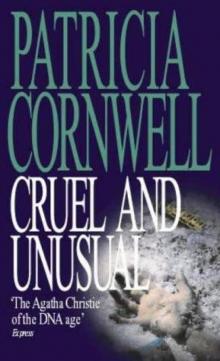 Cruel and Unusual ks-4
Cruel and Unusual ks-4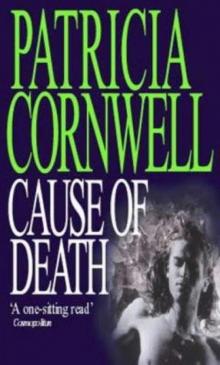 Cause Of Death ks-7
Cause Of Death ks-7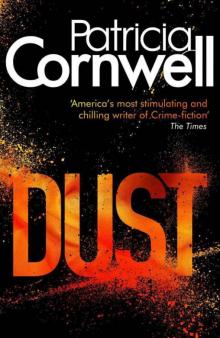 Dust ks-21
Dust ks-21 At Risk wg-1
At Risk wg-1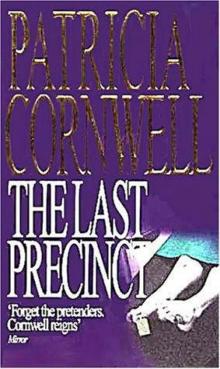 The Last Precinct ks-11
The Last Precinct ks-11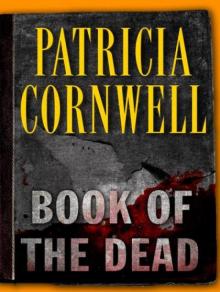 Book of the Dead ks-15
Book of the Dead ks-15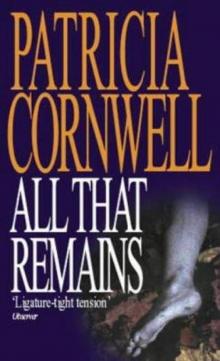 All That Remains ks-3
All That Remains ks-3 Ruth, a Portrait
Ruth, a Portrait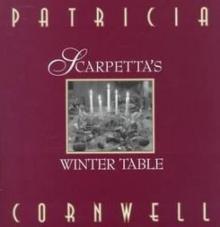 Scarpetta's Winter Table (kay scarpetta)
Scarpetta's Winter Table (kay scarpetta)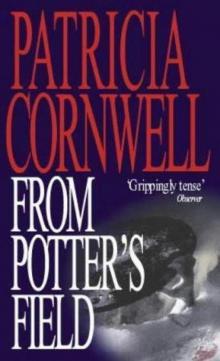 From Potter's Field ks-6
From Potter's Field ks-6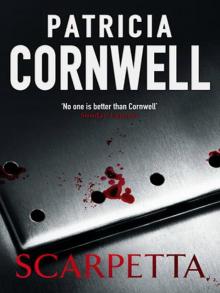 Scarpetta
Scarpetta Isle of Dogs jhabavw-3
Isle of Dogs jhabavw-3 Hornet's Nest jhabavw-1
Hornet's Nest jhabavw-1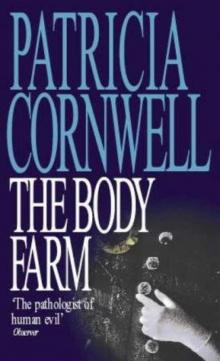 The Body Farm ks-5
The Body Farm ks-5 Blow Fly ks-12
Blow Fly ks-12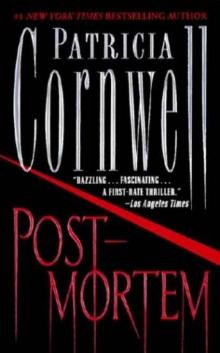 Post Mortem
Post Mortem Five Scarpetta Novels
Five Scarpetta Novels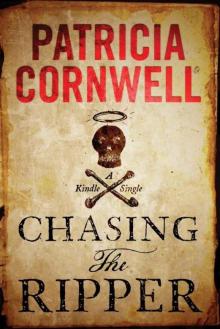 Chasing the Ripper (Kindle Single)
Chasing the Ripper (Kindle Single)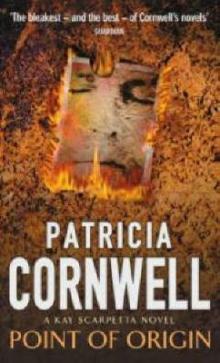 Point of Origin ks-9
Point of Origin ks-9 Port Mortuary (2010)
Port Mortuary (2010)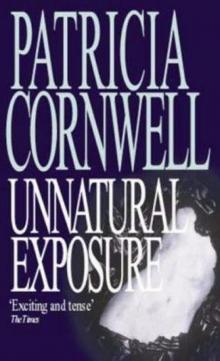 Unnatural Exposure ks-8
Unnatural Exposure ks-8 Southern Cross uhabavw-2
Southern Cross uhabavw-2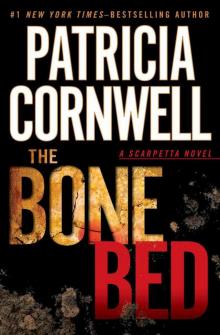 The Bone Bed ks-20
The Bone Bed ks-20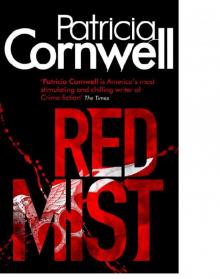 Red Mist ks-19
Red Mist ks-19 Port Mortuary (2010) ks-18
Port Mortuary (2010) ks-18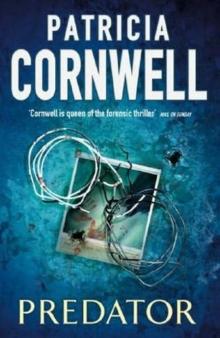 Predator ks-14
Predator ks-14